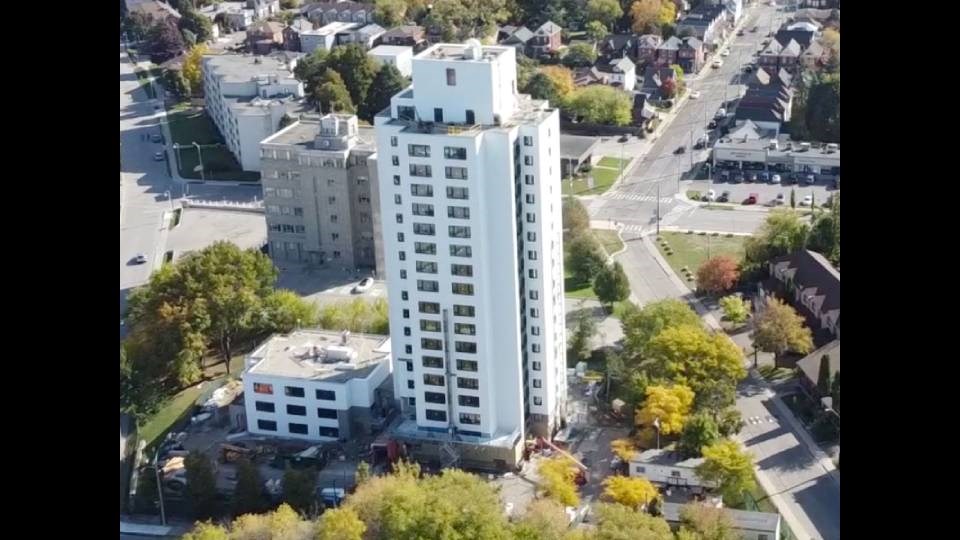With heat waves, forest fires, droughts and other signs of climate change increasing around the globe, builders need to design structures that prioritize heat resilience in order for people to avoid overheating in the coming years.
That’s the word of Tom Phillips, a Davis, CA-based scientist at Healthy Building Research with more than 30 years of experience consulting on healthy, sustainable buildings.
Phillips was the guest speaker during a July 20 webinar hosted by the National Collaborating Centre for Environmental Health, a network of Canadian centres that focuses on health benefits and risks associated with natural and built environments, and identifies evidence-based information to mitigate those risks.
“The bad news is that buildings and infrastructure in Canada are not prepared for these changes, like much of the world,” he said.
Canada, in particular, is a rising “hotspot” for heat-related events in North America, Phillips said, pointing to the heat dome that hit Western Canada in late June 2021 as an example. A heat dome occurs when intense atmospheric pressure traps heat in a concentrated area.
During that event, the BC Coroners Office reported 619 heat-related deaths took place. Phillips said more of these types of events are anticipated in the future.
Indoor heat exposure is important because most of us spend about 90 per cent of our time inside, he said, especially if there’s a heatwave, pandemic, or wildfire. Most heat-related deaths occur indoors, he said.
And stress caused by heat can impact sleep, student performance and worker productivity, which have related health and economic effects, Phillips said.
“We know that energy and climate inequity occurs in many regions and has been exacerbated by increased utility, housing and health-care costs,” he said. “So we need our homes, schools and other buildings as shelters that allow us to recover.”
In combatting indoor heat, industry research shows that constructing or retrofitting buildings using passive cooling is the most effective measure, Phillips said.
Passive cooling involves using techniques that prevent the sun from heating the building in the first place. That might include applying shades to block the sun, installing better insulation, or sealing cracks and holes that allow air in and out of the house.
Phillips said the U.K. has been the world leader in passive housing standards, with the Chartered Institution of Building Services Engineers (CIBSE) introducing a design guide for passive cooling for residential buildings.
But Canada, too, is making strides on this front.
In British Columbia, the BC Energy Step Code outlines performance measures to help builders meet certain standards when constructing new buildings.
“So far it’s voluntary, but lots of people are using it, and I think it will probably become mandatory at some point, if nothing else, to limit liability,” Phillips said.
In Hamilton, the Ken Soble Tower underwent a retrofit, completed in 2021, that is said to meet passive house standards of reducing greenhouse gas emissions by 94 per cent.
The building, constructed in 1967, has been retrofitted with triple-glazed windows and a thermally continuous and airtight envelope with exterior and interior insulation.
New systems include direct ducting for fresh air supply, heat recovery, pumping, and modernized electrical. As well, Each unit has a ceiling fan and central low-energy cooling.
Other features, including a sprinkler system, new kitchens, and accessible washrooms for some units were also applied.
ERA Architects, the lead architects on the project, calls it “one of the most ambitious social housing transformations in the country.”
“They used 2050 temperature projections and they were able to not only reduce energy use over that projected period, but to show a reduction in greenhouse gas emissions by doing all these improvements to the building envelope and systems, in terms of efficiencies to be designed for cooling instead of the typical heat-oriented design,” Phillips said.
As a result, the units will stay warm in winter for up to two days, compared to the previous two hours, Phillips said, and in the summer, the units will stay cool for up to four days versus a half-day in a typical building.
More of this type of building design is popping up around the globe, Phillips said, and it can’t come soon enough.
Even small measures taken one at a time can have some positive impact on future needs.
“We need to integrate climate adaptation to extreme heat in all of our programs and policies now,” he advised.
“Push all the levers that you can to implement these overheating prevention measures, and even if you can’t do the full system and building upgrade, try to figure out how to phase it in when you're replacing some equipment, replacing your roof, or put in some features that allow you to easily upgrade the building later.”




